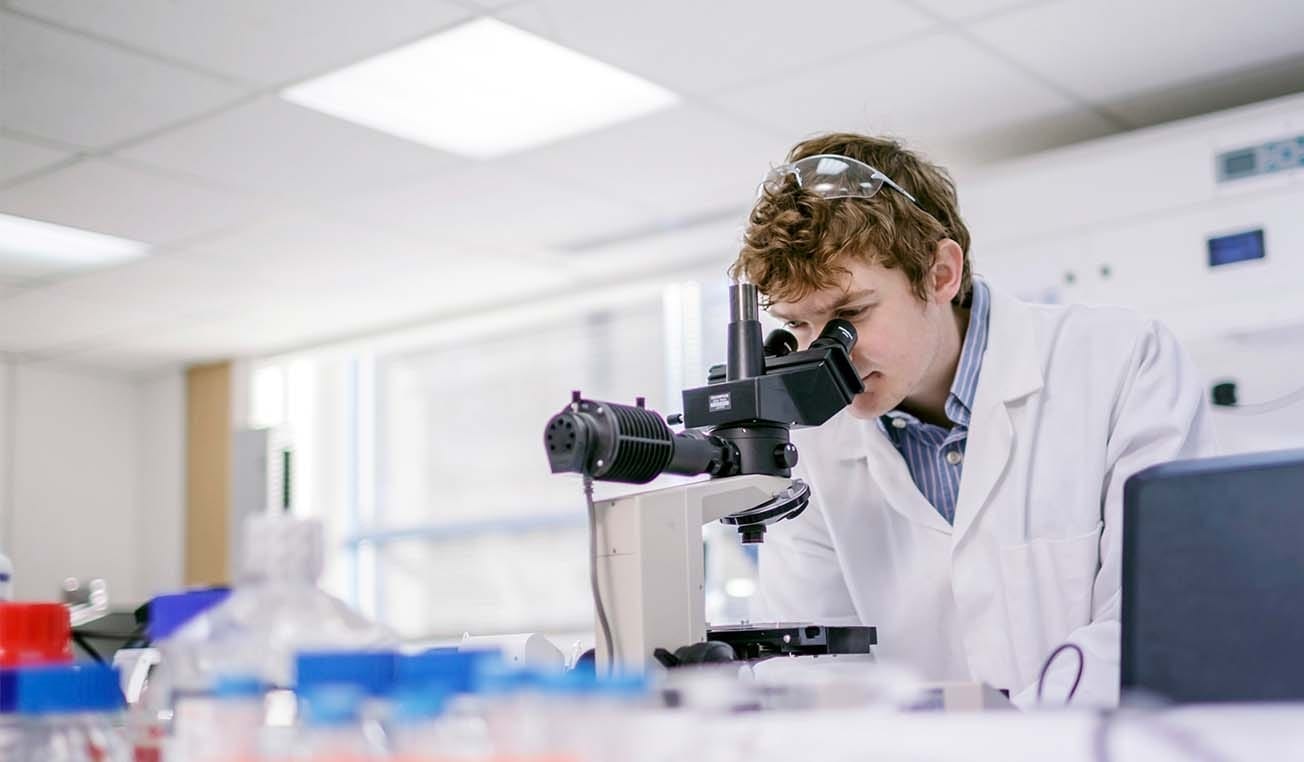Science and technology expertise
Sagentia Innovation has both breadth and depth in its technology and scientific expertise. Our science and technology teams work cross-sector as we believe that the learnings from one sector can inform another and that clients’ projects should have access to the full range of skills from across the Group.
Meet some of our specialist teams talking about their expertise and experience across the product development and advisory consulting service we deliver
Learn about our advisory team who can help inform your R&D strategies by analysing technology and market trends
Francisco outlines how our product development and advisory teams work together to support clients in identifying opportunities for growth and to develop their value proposition.
Find out about the unique mix of expertise in our applied sciences team
Meet Euan, Shababa, and Karen, who give a brief insight into the team behind our science deep dive capability, which differentiates us and enables us to add extra value to the projects we undertake.
Our Mechanical Engineers, Industrial Designers and Human Factors experts welcome you to find out more about their skills and experience
Meet Chas, Gary and Martyn who will talk about our integrated team of experts and how they excel in product design engineering.
Get to know our software team
Meet Paulo and Jonny who tell you about our first-class expertise and how we develop breakthrough software solutions that enable market differentiation.
Find out more about our experienced electronics and systems team
Tim and Mark talk about how their flexible approach, range of technical capabilities, and scalability under one roof is a real benefit to our clients.
Physical sciences
Our team of physical scientists work across our service lines undertaking science and technology “deep dives” and full product development. We make extensive use of mathematical modelling for many areas such as fluidics, thermals and acoustics to accelerate product development. We specialise in development of novel sensor technologies which utilise many of these skills. Our facilities include dedicated microfluidics lab, optics labs, and flow lab.
Physics
Acoustics
Electromagnetics
High energy physics
Thermodynamics
Fluidics & microfluidics
Optics & imaging
Mathematical modelling
Numerical analysis
Materials science
Physics
Acoustics
Electromagnetics
High energy physics
Thermodynamics
Fluidics & microfluidics
Optics & imaging
Mathematical modelling
Numerical analysis
Materials science
Chemistry and life sciences
Our life sciences team span several different teams and are widely deployed across all our sectors. The skills support both product development and advisory services and are especially in demand for sustainability projects. Our facilities include multiple, well-equipped chemistry labs, environmental testing labs, microbiology labs and a food development lab.
Chemistry
Formulation
Biochemistry
Biology
Microbiology
Bioinformatics
Food science & nutrition
Clinical biology
Pharmacology
Chemistry
Formulation
Biochemistry
Biology
Microbiology
Bioinformatics
Food science & nutrition
Clinical biology
Pharmacology
Digital sciences
Our digital team helps you navigate digital transformation with a wide range of data-driven skills. We can assist in building strategic roadmaps, designing new products, building sensors, data management and enrichment, data, visualising hidden patterns, building predictive models, behavioural modelling, and uncovering unusual high risk events.
Data modelling
Data Science
AI & machine learning
Computer/machine vision
Algorithms
Software architecting
Software engineering
Data modelling
Data Science
AI & machine learning
Computer/machine vision
Electronic and mechanical engineering
Our team of systems’ engineers design and build comprehensive systems that span multiple components (physical and virtual). They also have the detailed mechanical and electronic engineering skills to design, develop and take to manufacture each component, functionally and technologically. We have fully equipped electronics labs, anechoic chambers, rapid prototyping, and inspection labs.
Systems engineering
Systems modelling
Design-led thinking
Mechanical engineering
Electronics hardware
Low power systems
Ruggedisation
Design for extreme environments
Wireless communications
Digital twins
Design for manufacture / assembly
Systems engineering
Systems modelling
Design-led thinking
Mechanical engineering
Electronics hardware
Low power systems
Ruggedisation
Design for extreme environments
Wireless communications
Digital twins
Design for manufacture / assembly
Sensory science and human insight
Our team of insight specialists, sensory scientists and data experts bring the lens of human experience to scientific, technical and design projects, providing insight into how people think, feel and respond to innovations. We have an independent trained sensory panel with specialised food tasting area. We also offer focus group facilities and dedicated ideation spaces with remote operating capabilities.
Sensory Science
Consumer testing
Consumer insight
User Interface design
User experience consulting
Sensory Science
Consumer testing
Consumer insight
User Interface design
User experience consulting
Step by step: ensuring your instructions are as intuitive as your medical device
Products with a low number of user steps are often perceived as user-friendly, efficient, and easy-to-use. However, if critical steps are omitted from instructions, confusion and user error can...
VIEWDecember 2023
Harnessing powerful data and AI for the FMCG and agricultural sectors
VIEW
November 2023
Minimum Lovable Product - Using empathy to make your products fly
VIEW
August 2023
Scaling up synthetic biology: challenges & solutions
VIEW

About Science Group
Science Group is an international science, engineering and technology (“SET”) business providing a range of services to the medical, defence, industrial, food & beverage and consumer sectors, supplemented by a strategic products division where the Group holds leading market positions in associated technology sectors.
